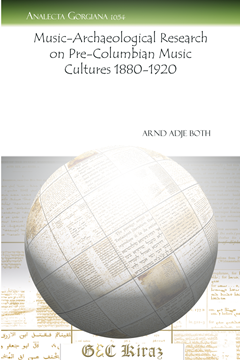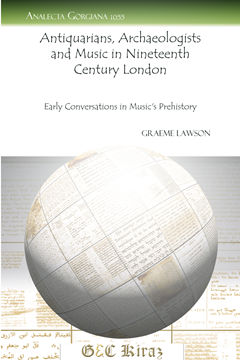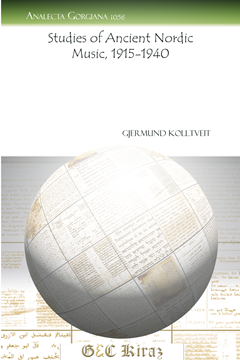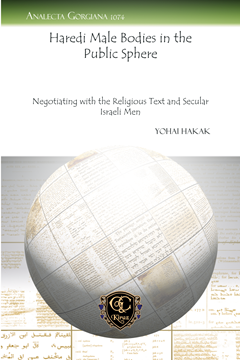From Music Archaeology to Historiography
Andean Music Archaeology and Musical Instruments, Singing and Dancing in Guaman Poma's Nuéva Crónica y Bien Gobierno
Series: Analecta Gorgiana 1053
ISBN: 978-1-4632-0101-2
Hickmann describes a 17th century work by Guaman Poma chronicling the first period of the Conquista. Details from this book are comparable to archaeological finds of musical instruments that have since disappeared. The author provides illustrations of ancient Andean instruments.
$36.00 (USD) $21.60 (USD)
Music-Archaeological Research on Pre-Columbian Music Cultures 1880-1920
Series: Analecta Gorgiana 1054
ISBN: 978-1-4632-0102-9
This paper contains an overview of Pre-Columbian music research between 1880 and 1920. Figures and the interdisciplinary direction of the research movement are discussed in detail. Many of these early studies remain ignored, which is a concern for music historiography.
$37.00 (USD) $22.20 (USD)
Antiquarians, Archaeologists and Music in Nineteenth Century London
Early Conversations in Music’s Prehistory
Series: Analecta Gorgiana 1055
ISBN: 978-1-4632-0103-6
Proceedings from the British Archaeological Association contain music studies from 150 years ago. Lawson raises a historiographical concern for these early discussions, as many of the authors are forgotten.
$37.00 (USD) $22.20 (USD)
Studies of Ancient Nordic Music, 1915–1940
Series: Analecta Gorgiana 1056
ISBN: 978-1-4632-0104-3
The pioneers who contributed towards the formative period of Scandinavian musicology (ca. 1915–1940) were highly interested in ancient music. Kolltveit describes approaches by pioneers Hammerich, Panum, Andersson, Norlind, Leden and Tveitt in their cultural, political, and academic contexts.
$38.00 (USD) $22.80 (USD)
Music Archaeology in Scandinavia, 1800-1990
Series: Analecta Gorgiana 1057
ISBN: 978-1-4632-0105-0
Lund describes the development of Scandinavian music history from 1797 with the first discovery of lurs in Denmark to the modern discipline as it is established in research during the 19th and 20th centuries. Systematic orientation came in the 1970s.
$38.00 (USD) $22.80 (USD)
Rhapsody in Blue
The Origin of God's Footstool in the Aramaic Targumim and Midrashic Tradition
Series: Analecta Gorgiana 1059
ISBN: 978-1-4632-0106-7
Three interpretative trends address the vision at the ratification of the Sinai covenant in Exod. 24:10. Traditions relate whether God or a throne was seen, as well as the consequences for this vision for the leaders and history of the Israelites.
$35.00 (USD) $21.00 (USD)
Biblical Text in Rabbinic Context
The Book of Chronicles in the Mishnah, Talmud and Midrash
By Isaac Kalimi
Series: Analecta Gorgiana 1060
ISBN: 978-1-4632-0107-4
This study investigates how the Rabbis handled the Book of Chronicles, highlighting issues including intermarriage. While genealogical lists contain intermarriage in Chronicles, Ezra-Nehemiah is generally opposed. Ezra did compose some of the lists and intermarriage was acceptable only under certain conditions.
$35.00 (USD) $21.00 (USD)
The Performance of Normativity
Mormons and the Construction of an American Masculinity
Series: Analecta Gorgiana 1069
ISBN: 978-1-4632-0116-6
This paper examines the construction of masculinity among male members of the Church of Jesus Christ of Latter-day Saints (Mormons) and its underlying historical factors.
$36.00 (USD) $21.60 (USD)
"He Was Pretty Good in There Today"
Reviving the Macho Christ in Ernest Hemingway's ""Today is Friday"" and Mel Gibson's The Passion of the Christ
By Lisa Tyler
Series: Analecta Gorgiana 1070
ISBN: 978-1-4632-0117-3
This paper examines the “muscular Christianity” phenomenon in Mel Gibson’s 2004 film The Passion of the Christ and Ernest Hemingway’s 1926 short play, “Today is Friday.”
$35.00 (USD) $21.00 (USD)
Haredi Male Bodies in the Public Sphere
Negotiating with the Religious Text and Secular Israeli Men
By Yohai Hakak
Series: Analecta Gorgiana 1074
ISBN: 978-1-4632-0121-0
This paper explores the Israeli Haredi community’s social construction of the male body.
$38.00 (USD) $22.80 (USD)









